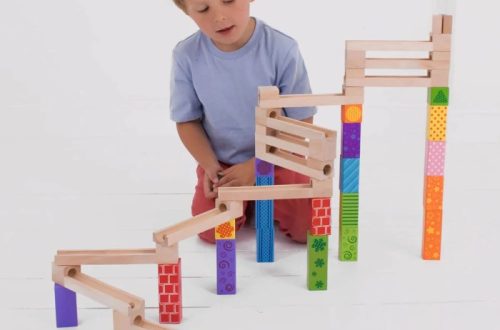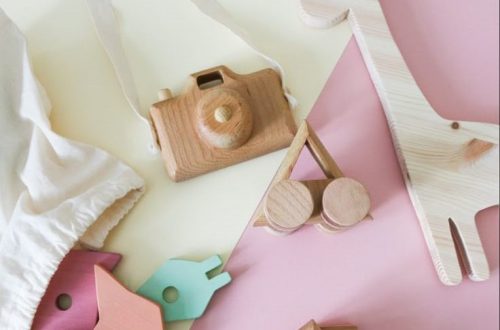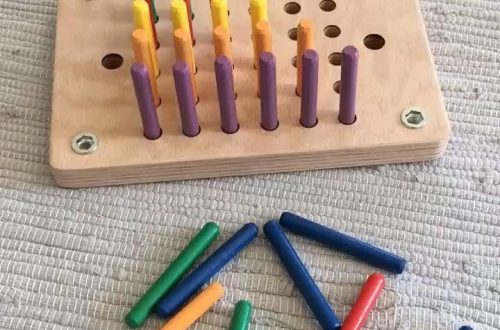Why Wooden Montessori Toys Are a Top Choice for Parents
In recent years, wooden Montessori toys have gained popularity among parents and educators alike. These toys offer more than just entertainment—they support cognitive growth, fine motor skills, and independent learning. Rooted in the Montessori philosophy, which emphasizes hands-on exploration and self-directed play, these toys help children learn at their own pace while staying engaged and curious.
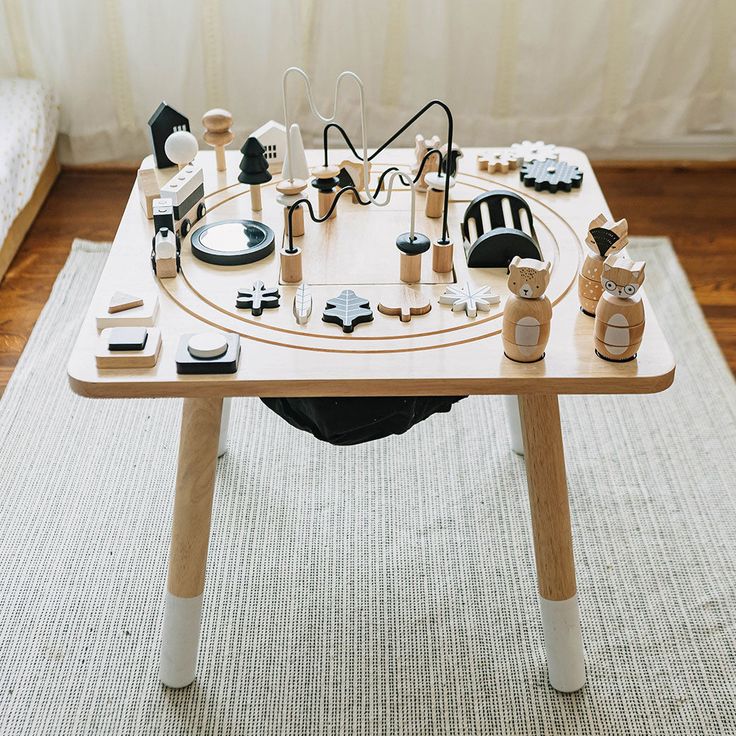
One of the main reasons for their growing appeal is their simplicity. Unlike plastic or electronic alternatives, wooden Montessori toys are often free from flashing lights and loud sounds. This allows children to focus on the task at hand without distractions, encouraging deeper concentration and problem-solving abilities. Many of these toys also follow the Montessori principle of “control of error,” meaning kids can see the results of their actions and learn through trial and error.
Another major benefit is durability. Wood is naturally strong and long-lasting, making these toys ideal for repeated use across multiple children. They also tend to be safer, as they are usually made with non-toxic finishes and avoid small parts that could pose choking hazards for young ones.
Moreover, many families are turning to wooden Montessori toys because of their eco-friendly nature. With rising concerns about plastic waste, sustainable and biodegradable wooden toys offer a greener alternative that supports both child development and environmental responsibility.
Whether used at home or in classrooms, wooden Montessori toys continue to stand out as a thoughtful and effective way to encourage meaningful play and lifelong learning.
What Makes Wooden Montessori Toys Different From Regular Toys
The unique qualities of wooden Montessori toys set them apart from typical mass-produced toys found in stores. These differences lie not only in material but also in design, purpose, and educational value. Understanding what makes them special helps parents choose wisely when building a toy collection for their child.
First, Montessori-inspired toys prioritize open-ended play. Unlike battery-operated or highly structured toys, they don’t come with fixed outcomes. Instead, they allow children to explore multiple ways of interacting with them. For example, a simple wooden stacking tower can become part of a counting game, a balance challenge, or even a pretend kitchen appliance. This flexibility encourages creativity and imagination.

Second, these toys are designed with intention. Each piece serves a developmental goal—whether it’s improving hand-eye coordination, sorting colors, or understanding shapes. The designs are often minimalist, focusing on one skill at a time. This aligns with the Montessori belief that children learn best through focused, repetitive activities that build mastery over time.
Third, they encourage independent learning. Montessori toys are built so that children can figure things out on their own. A puzzle might fit together in only one correct way, allowing the child to recognize mistakes and try again without adult intervention. This builds confidence and problem-solving skills.
Additionally, wooden Montessori toys promote sensory development. Natural wood has a smooth yet textured feel that stimulates touch, while the absence of bright plastics reduces visual overstimulation. This helps children engage fully with each toy and develop a stronger sense of focus.
Key Benefits
Choosing wooden Montessori toys brings a wide range of developmental benefits to young children. Designed to support natural learning, these toys go beyond entertainment by actively shaping a child’s cognitive, physical, and emotional growth.
One major advantage is improved fine motor skills. Many wooden Montessori toys require grasping, twisting, stacking, or sorting. These actions help strengthen hand muscles and improve dexterity. Activities like placing pegs into holes or threading beads onto strings enhance coordination and control, which are essential for writing and daily tasks later on.
Another benefit is enhanced concentration and focus. Montessori toys are intentionally simple, allowing children to engage deeply without distractions. When a child works through a wooden puzzle or fits shapes into matching slots, they practice sustained attention and perseverance. Over time, this builds mental stamina and patience.
Cognitive development also receives a boost. Because these toys often involve patterns, sequencing, or matching, they introduce foundational math and logic concepts in an intuitive way. Sorting colored blocks or arranging nesting cups teaches size comparison, categorization, and basic geometry—all through play.
Emotionally, wooden Montessori toys foster independence and confidence. Children can manipulate these items independently, completing tasks and recognizing their achievements without constant adult help. This sense of accomplishment promotes self-esteem and encourages further exploration.
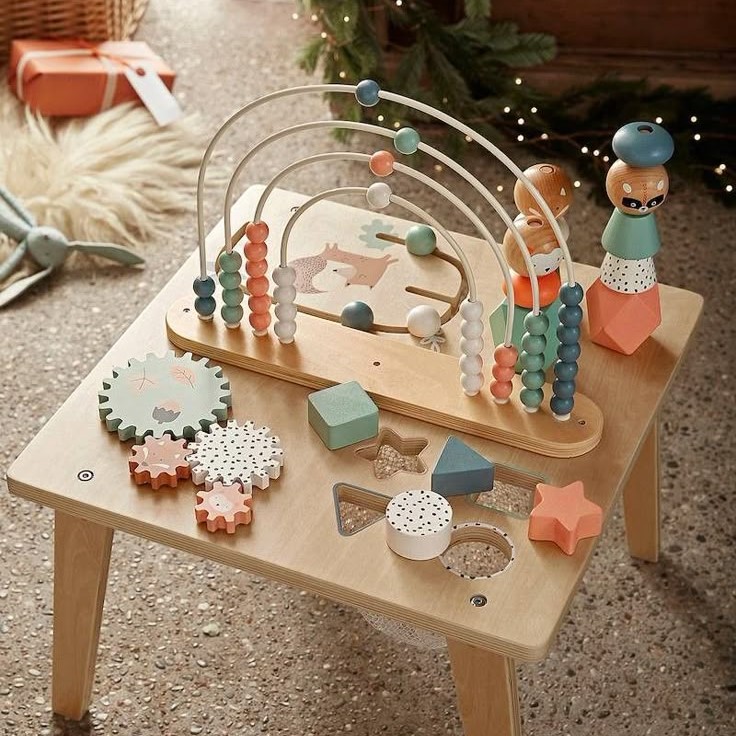
Social skills also benefit. Many Montessori toys invite cooperative play. Building with wooden blocks or solving a puzzle with siblings or peers introduces teamwork, turn-taking, and communication.
Lastly, these toys support language development. As children describe what they’re doing, ask questions, or narrate their actions, caregivers can guide vocabulary expansion and sentence structure naturally.
By combining play with learning, wooden Montessori toys create a rich environment where children thrive mentally, physically, and emotionally.
How to Choose the Right Wooden Montessori Toys for Your Child
Selecting the right wooden Montessori toys depends on your child’s age, interests, and developmental stage. Since Montessori principles emphasize learning through self-guided exploration, choosing age-appropriate toys ensures your child stays engaged and challenged. Here are some key factors to consider when making a selection.
For infants (0–12 months), look for toys that stimulate the senses. Simple rattles, grasping rings, and soft wooden teethers help develop hand-eye coordination and sensory awareness. Toys with different textures, colors, and weights provide tactile and visual stimulation.
For toddlers (1–3 years), opt for toys that encourage movement and fine motor development. Stacking blocks, shape sorters, and pull-along animals promote balance, coordination, and object permanence. At this stage, children begin to imitate real-life activities, so pretend play sets like wooden kitchens or dollhouses can be great additions.
For preschoolers (3–6 years), focus on toys that build logic, reasoning, and early literacy or numeracy skills. Puzzles, number rods, letter tracing boards, and pattern blocks help introduce basic academic concepts in a playful, hands-on way. Open-ended materials like wooden building sets also allow for creative construction and storytelling.
When selecting wooden Montessori toys, always check for safety. Look for smooth edges, non-toxic finishes, and sturdy construction. Avoid toys with small, detachable parts for younger children.
Also, consider open-ended play potential. The best Montessori toys can be used in multiple ways, adapting as the child grows. A set of wooden blocks can become a house, a bridge, or a spaceship—offering endless possibilities for learning and creativity.
By matching toys to your child’s developmental needs, you ensure they receive the most benefit from each play session.
Popular Types
There are several types of wooden Montessori toys, each designed to target specific developmental areas. Knowing which type suits your child’s current stage of growth helps you make informed choices that support learning and engagement.
1. Grasping and Sensory Blocks – Ideal for infants and young toddlers, these toys help develop hand-eye coordination and sensory exploration. Textured wooden blocks, bead mazes, and soft wooden rattles stimulate touch, sight, and sound.
2. Stacking and Nesting Cups or Bowls – These toys teach spatial awareness, size comparison, and cause-and-effect relationships. Toddlers enjoy stacking rings, nesting boxes, and graduated cups that encourage experimentation with order and sequence.
3. Shape Sorters and Matching Games – These tools introduce early logic and problem-solving skills. Children learn to match colors, shapes, and sizes while developing fine motor skills. Classic examples include wooden shape sorters and form boards.
4. Push and Pull Toys – Perfect for walkers and runners, push carts and pull-along animals help develop gross motor skills. They also support balance and coordination as children move around while holding onto or pulling their toys.
5. Puzzles and Tracing Boards – These toys introduce early literacy and numeracy in a playful way. Letter and number puzzles, along with sandpaper letters or textured tracing boards, help children recognize symbols through touch and repetition.
6. Building and Construction Sets – Wooden building blocks, ramps, and connectors encourage creativity and engineering skills. These open-ended toys allow children to experiment with balance, gravity, and design, supporting STEM learning in a fun and engaging way.
Where to Buy High-Quality Wooden Montessori Toys
Finding high-quality wooden Montessori toys requires knowing where to shop. Whether you’re looking for trusted online retailers or local stores, here are some of the best places to purchase durable, educational, and thoughtfully designed options.
1. Amazon – One of the largest marketplaces, Amazon offers a wide variety of wooden Montessori toys from different brands. You’ll find options for all age groups, including classic Montessori favorites like shape sorters, stacking towers, and sensory blocks. Customer reviews help guide purchasing decisions, and Prime shipping ensures fast delivery for last-minute needs.
2. Melissa & Doug – Known for its commitment to quality and child development, Melissa & Doug offers a wide range of wooden Montessori-style toys. Their products feature durable wood, vibrant colors, and minimal screen time—perfect for encouraging imaginative and hands-on learning.
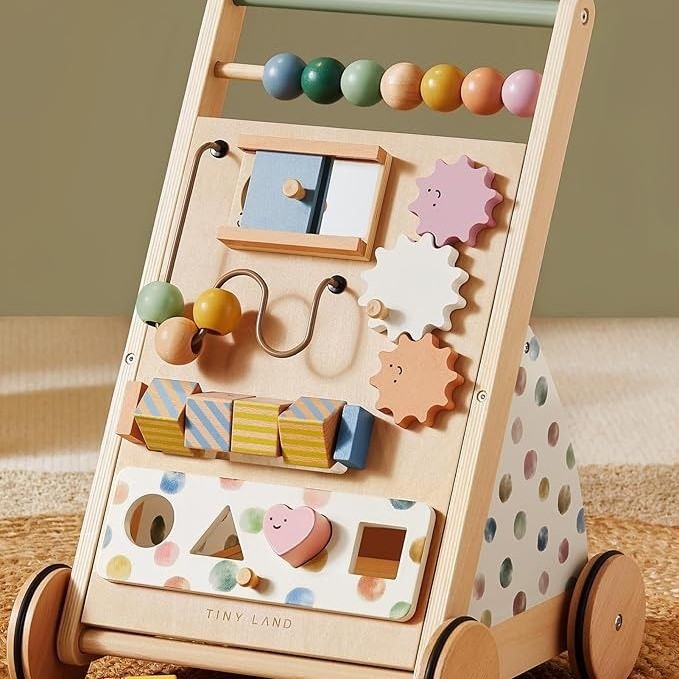
3. Hape Toys – Hape specializes in eco-friendly wooden Montessori toys made from sustainable bamboo and other renewable resources. Their toys are known for being safe, durable, and educational, with many inspired by Montessori principles.
4. Guidecraft – Guidecraft creates Montessori-aligned toys that support early learning through play. Their wooden puzzles, sorting trays, and practical life kits are popular in Montessori classrooms and homes. These toys are built to last, making them a smart investment for growing children.
5. Etsy – For handmade or small-batch wooden Montessori toys, Etsy is a go-to platform. Independent sellers create custom pieces with organic finishes, unique designs, and personalized touches. While prices may vary, the craftsmanship is often superior, appealing to those who value individuality and sustainability.
How to Introduce Montessori Toys Into Daily Playtime
Introducing wooden Montessori toys into your child’s daily routine doesn’t have to be complicated. In fact, the beauty of these toys lies in their simplicity and adaptability. Here are some practical tips for incorporating them into everyday play in a meaningful way.
Start by creating a calm and organized play space. Montessori learning thrives in environments that minimize clutter and distractions. Set up a low shelf with a few carefully chosen wooden Montessori toys within reach of your child. Rotate the toys every few weeks to maintain interest without overwhelming them with too many options at once.
Next, encourage independent exploration. Allow your child to interact with the toy at their own pace. Resist the urge to direct their play unless they ask for help. Montessori learning is based on self-discovery, so letting your child figure things out on their own builds confidence and critical thinking.
You can also integrate Montessori toys into daily routines. Use wooden spoon and bowl sets during meal prep, or let your child organize wooden fruit in a basket during cleanup time. These small moments reinforce learning and practical life skills.
Try modeling quiet and focused play. Sit nearby and observe your child’s interaction with the toy. If they seem stuck, demonstrate the intended use gently and briefly, then step back to let them take over. This approach respects their autonomy while offering guidance when needed.
Don’t forget to use descriptive language during play. Talk about colors, shapes, and actions to expand vocabulary and concept recognition. For example, say, “This red ring goes on the bottom because it’s the biggest,” to introduce size comparison in a natural way.
Common Mistakes
Even the best wooden Montessori toys can lose their effectiveness if not chosen or used correctly. Many parents make common mistakes that affect their child’s learning experience. Being aware of these errors ensures a more fulfilling and educational playtime.
One common mistake is choosing toys that are too advanced. Just because a toy looks educational doesn’t mean it’s appropriate for your child’s current stage. Always match the complexity of the toy to your child’s developmental level. A 1-year-old won’t benefit from a complex wooden puzzle meant for a 4-year-old.
Another error is overloading the play area. Too many toys can overwhelm young minds and reduce focus. Montessori learning emphasizes simplicity and intentionality, so limit the number of available toys to five or fewer at any given time. Rotate them regularly to keep things fresh without causing confusion.
Many parents also underestimate the importance of unstructured play. While it’s tempting to guide your child’s play, Montessori learning relies on self-directed exploration. Let your child engage with the toy in their own way instead of showing them exactly how to use it every time. This fosters independence and creativity.
Some parents focus too much on aesthetics. While beautiful wooden toys are appealing, function should always come first. Prioritize toys that promote real learning and development rather than those that simply look nice on a shelf.
Another oversight is not checking for safety standards. Even though wood is a durable material, poorly finished or painted toys can splinter or chip. Always inspect toys for rough edges, non-toxic finishes, and secure joints before giving them to your child.
How to Care for and Maintain Montessori Toys
Proper care and maintenance of wooden Montessori toys extend their lifespan and preserve their quality for future use. Whether you’re passing them down or sharing with multiple children, following a few simple steps ensures they remain safe and functional for years.
Begin by cleaning regularly with natural solutions. Wipe surfaces with a damp cloth and mild soap. Avoid harsh chemicals or excessive water, as they can damage the wood and finish. For disinfecting, mix equal parts water and white vinegar, then wipe the surface and let air dry.
Store toys properly to prevent warping or cracking. Keep them in a dry, well-ventilated space. Avoid leaving them in direct sunlight or humid areas like bathrooms or basements. Dust them occasionally to prevent buildup, especially on textured or grooved surfaces.
If the wood becomes dry or dull, apply food-grade mineral oil or beeswax polish. This restores shine and protects against wear and tear. Apply sparingly using a soft cloth and let it absorb overnight before wiping off excess.
Avoid exposing wooden toys to extreme temperatures. Never leave them near heaters, fireplaces, or outdoors in wet conditions. Sudden changes in temperature and moisture can cause warping, splitting, or mold growth.
If a toy gets damaged, repair it promptly. Fix loose parts with child-safe glue or sand down rough edges with fine-grit sandpaper. Replace broken components to maintain safety and functionality.
Teach your child to respect and care for their toys. Encourage gentle handling and proper storage after playtime. This instills responsibility and prolongs the life of each toy.
By practicing good maintenance, you protect your investment and pass on high-quality wooden Montessori toys to future generations.

Final Thoughts
Investing in wooden Montessori toys is more than just purchasing playthings—it’s about creating a learning environment that nurtures curiosity, creativity, and independence. These toys offer a timeless and intentional approach to early childhood development, blending simplicity with deep educational value.
From boosting fine motor skills to encouraging problem-solving and logical thinking, wooden Montessori toys support a wide range of developmental milestones. Their open-ended nature allows children to explore freely, promoting imagination and self-directed learning.
As you select toys, remember to match them to your child’s age, abilities, and interests. Focus on quality over quantity, and give your child the space to engage deeply with each toy. With the right choices and care, these toys can grow with your child and provide lasting value.
Whether you’re new to Montessori methods or expanding your child’s toy collection, choosing the right wooden Montessori toys is a smart decision for both learning and play.


